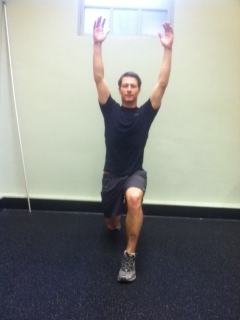by Jonathan Ide-Don, PT, DPT, OCS
WHAT IS CADENCE?
Cadence is the number of steps (or strides) a runner takes in a set amount of time. It is often expressed in steps per minute (each foot hitting the ground counts as one step) or strides per minute (one cycle of right foot then left foot hitting the ground counts as one stride). Other names for cadence include step rate, step frequency, and turnover. Cadence is also one component that determines running speed:
Cadence X Step Length = Speed
WHY IS IT IMPORTANT?
Cadence is one of the key factors affecting running mechanics. If a runner maintains a constant speed, but increases their cadence, their step length will shorten as well. A shorter step length and faster cadence can have effects on muscle activation patterns, joint loading, and the overall movement patterns.
Cadence is one factor that is under conscious control of the runner, and short-term changes can be seen immediately with easily accessible tools or cues. Making long-term changes stick will require practice over a period of weeks to months.
WHAT DOES THE RESEARCH SAY ABOUT CADENCE?
Key points from the research:
Running with a quicker cadence results in the following:
- Shorter step length (Fletcher 2010)
- Less vertical displacement
- Shorter stance time
- Better shock attenuation (Hamill 1995)
- Less energy absorption at knee (Heiderscheit 2011)
- Less energy absorption at hip
- Less braking as the foot hits the ground
- Increased gluteal activation (Chumanov 2012)
WHAT DO THE COACHES SAY?
There appears to be a general consensus that a minimum of 170 to 180 steps per minute is a good cadence to shoot for. Pose running teaches at least 180 steps per minute, but faster if the athlete is able to perform the proper technique. Chi running also teaches an ideal cadence of 180 steps per minute. Blaise Dubois, a physiotherapist based in Quebec City, also advocates a cadence of at least 170 steps per minute. He recommends increasing the cadence to 180-185+ steps per minute for faster workouts.
WHAT DOES THIS ALL MEAN?
- Increasing cadence lessens forces at the knee and hip joints
- Increasing cadence lessens risk of stress fractures associated with repeated, excessive loading of the bone
- Increasing cadence increases gluteal activation, which may positively affect alignment of your knees, ankles, and feet during running
If you are looking to prevent future injuries, or to return to running following an overuse injury, increasing your cadence 10% over your preferred cadence may be beneficial.
A specific target for your cadence is largely dependent upon the individual. However, shooting for at least 170-180 steps per minute may be a good place to start.
HOW DO YOU DO IT?
1. Running intervals with a metronome
If you have a smartphone, you can download free or really cheap metronome apps onto your phone. As part of your warm up, run for 30 to 60 seconds with the metronome matching your footsteps to the metronome beat, rest for 1 minute, and repeat 3 to 5 times. Then shut off the metronome, and go out for your run and try to maintain your goal cadence. My personal favorite is the Steinway & Sons free app for the iPhone:
https://itunes.apple.com/us/app/steinway-metronome/id393021343
2. Running with music with specific beats per minute
Build a playlist! Running with music can make some runners feel like they are working less hard to maintain a certain speed (Bood 2013). Even better, the music can serve as your metronome. Check out the websites below to search and find songs to build a playlist at different cadences:
http://www.cs.ubc.ca/~davet/music/bpm/
http://www.bpmdatabase.com/search.php
http://runningplaylist.net/category/bpm-2/page/2/
3. Running drills with a metronome
These drills are excellent technique drills as part of your warm up. Using a metronome while practicing the drills is a great way to practice the rhythm of running at a faster cadence. Try each drill 3 times each for 30 seconds, matching your footsteps to the metronome beat.
https://ptsportswellness.wordpress.com/2013/12/04/running-drills-the-quick-switch/
https://ptsportswellness.wordpress.com/2013/12/04/running-drills-modified-butt-kicks/
https://ptsportswellness.wordpress.com/2013/12/04/running-drills-modified-butt-kicks-moving-forward/
4. Jump rope
Practice jumping rope with both feet hitting the ground with a quick, light hop. Jump rope is a great way to teach your body how to quickly get your feet on and off the ground. Progress from 2 feet jumps to alternating right foot / left foot jumps. Focus on quickly picking the heel straight up toward your sit bone, hopping just high enough off the ground to clear the rope. 30-60 seconds of jumping with 30-60 seconds of rest for 5-10 rounds is a great way to start.
5. Use mental imagery
For those runners who work best with a mental image, some of my favorite cues I have heard are “run like you are running on hot coals,” “Hot feet,” or “run like you are running on thin ice.” Try different mental cues, and find the one that works for you the best.
SOME CAVEATS
1. Keep your speed constant.
Some runners who have tried to increase their cadence told me that their tendency is to just want to run faster. This point is valid, because as running speed increases, running cadence tends to increase as well. The challenge is can you run at a constant speed, but increase your cadence? Running on a track, treadmill, or straight flat pathway with distances marked can help you control your pace while learning the faster cadence.
2. Practice, practice, practice… and be patient!
A running course I recently attended recommended 6 weeks of running homework with drills 3 days per week, which included a lot of metronome drills. It takes a long time to make permanent changes in your running cadence, as your body likely has “overlearned” its preferred cadence.
REFERENCES
Fletcher et al. Biomechanical performance factors in pose running and heel-toe running. International quarterly of sport science 2010/2012.
Chumanov et al. Changes in muscle activation patterns when running step rate is increased. Gait and posture. (36): 231-235, 2011.
Bood et al. The power of auditory-motor synchronization in sports: enhancing running performance by coupling cadence with the right beats. PLOS ONE. 8(8): 1-8, 2013.
Heiderscheit et al. Effects of step rate manipulation on joint mechanics during running. Medicine and science in sports and exercise. 43(2): 296-302, 2011.
Hamill et al. Shock attenuation and stride frequency during running. Human Movement Science. 14(1): 45-60, 1995.
Romanov, N. (2004). Pose Method of Running. USA: Pose Tech Press.























